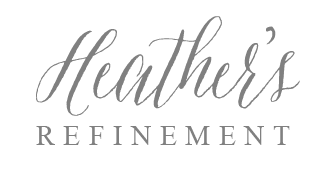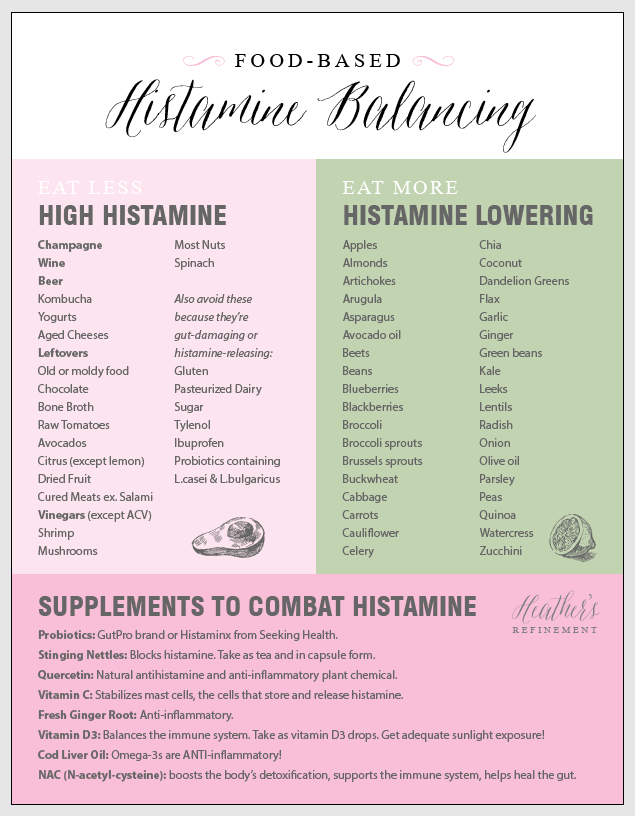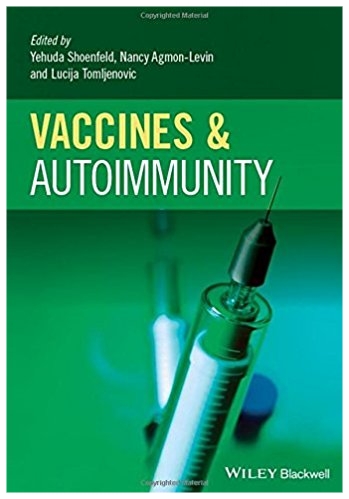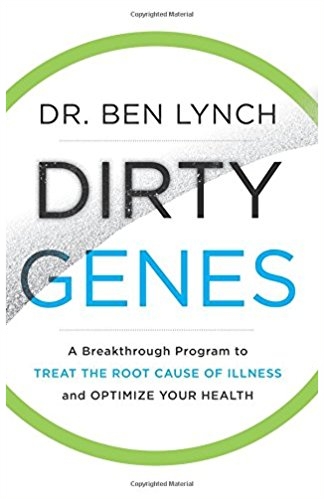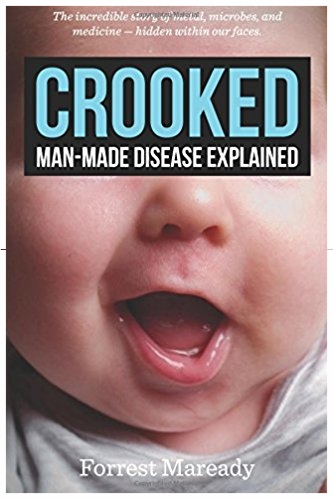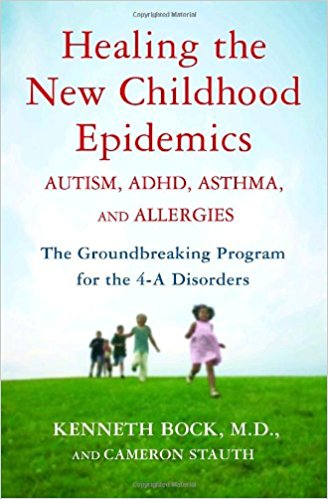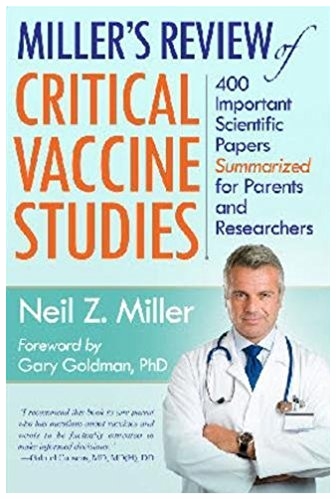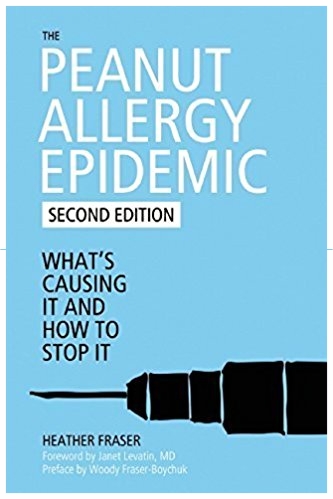What Causes Allergies, and What We Can Do
In only the past two years — I can remember the exact day it began — I’ve developed Spring pollen and mold allergies. Like 40-60 million other Americans, I get the seasonal symptoms of itchy eyes and the sneezing and feeling like my lungs are irritated. And lately, I’ve been frustrated with this predicament and sort of dreading the return of sunny, humid weather because of it. Interestingly, two of my children began to struggle with Spring allergies only last year. The funny thing is, in the past five years, our family has eaten our healthiest with loads more vegetables than ever before, paying extra attention to our gut health, and and we’ve consumed far fewer pesticides or pharmaceuticals of any kind. And both of these children were fully breastfeed for at least a year each! What gives?
As with everything, I want to know WHY. What on earth happened to me to cause my body to overreact to harmless particles in nature like tree pollen? What happened to everyone else struggling with it these days?
I know that God has designed us to to be self-healing, self-balancing, that nothing about health is random — it’s cause and effect— and I also know that seasonal allergies didn’t exist before the 1800s. Actually, allergies in general didn’t exist before the 1800s, except for a few rare unnaturally strong reactions to insect stings (which cause an injection of poison into the body)— the concept was unheard of.
In 1819 a doctor in London was struggling to find the words to describe this new phenomenon (there was no name for it!):
“…A sensation of heat and fulness is experienced in the eyes…a general fulness is experienced in the head, and particularly about the forepart; to this succeeds irritation of the nose, producing sneezing…To the sneezing are added a farther sensation of tightness of the chest, and a difficulty of breathing…” 1
And ten years later, when he presented this to other physicians, he could only find 28 people suffering from this new thing:
“One of the most remarkable circumstances respecting this complaint is its not having been noticed as a specific affection until within the last ten or twelve years…I have not met with anything that can be supposed to refer to it in any author, ancient or modern."
Perhaps coincidentally, a new medical treatment had begun only years earlier with Edward Jenner in 1788, where doctors would cut a wound into people’s arms and then rub pus (from a horse or cow, along with contaminants of all kinds — syphilis and leprosy were often spread) into it— also known as smallpox vaccination. For those who survived this crude procedure and who didn’t succumb to actual smallpox itself, there were new symptoms of seasonal sniffles and breathing difficulty, and people were also suddenly developing full-body eczema, another brand new phenomenon. But what does vaccination have to do with allergies?
The story continues with the Diphtheria antitoxin injection that began in the 1890s. This shot was typically created by culturing diphtheria in a horse, then bleeding the horse, filtering out the red blood cells, and injecting the resultant liquid into kids in hopes that they’d be protected from actual diphtheria infection. Perhaps it sounded like an excellent idea at the time when people were feeling desperate, except when you realize that back then, filtration and purification standards didn’t exist and the end product was inherently contaminated. By the mid-1890s, it was well known that injection with antitoxin could result in the potentially fatal illness called “serum sickness,” which would include a wide range of symptoms: fever, joint pain, rash, breathing difficulty, and shock. This was sudden man-made mass allergy. 2
Food Allergy Begins
It was only in 1901 that anaphylaxis was discovered by French immunologist and Nobel laureate Charles Richet. 3 How? He injected a small dose of proteins into a dog, and injected another small amount weeks later, which would then cause a violent reaction — anaphylaxis — that often killed the dog. He learned that any protein that bypasses the body’s normal defense system—the mucosal tissues of the gut, nose, or the skin barrier—can cause allergy. Injection allows proteins an easy entry into the blood, where they are seen as foreign invaders! The body creates antibodies to the proteins that are not supposed to be there, and the next time you eat them, your body releases massive amounts of histamine, which produce the nasty symptoms of allergy.
Food allergies greatly increased in the 1930s, especially to eggs. In 1931, vaccine makers had begun culturing their product in hen’s eggs, and even before then had used egg lecithin as an ingredient in vaccines. Food allergy continued, next to cottonseed, as it was used in both vaccines and in penicillin injections.
In 1959 and 1973, studies found that mice injected with pertussis vaccines became allergic to grass pollens 4, or ragweed pollen that so happened to be in the air when the shot was given 5.
Fast forward to the explosion of life-threatening peanut allergy from the 1990s onward (right when new vaccines were added to the schedule — Hepatitis B and Hib — and following the new Vitamin K injection for newborns in the mid-1980s), and now to food allergies and sensitivities of ALL kinds.
It’s difficult to simply *eat* a food, and become allergic to it. But bypass the gut through injection, and you’ve got quite the problem. Today, manufacturers have greatly improved their ability to filter out many (but far from all) unwanted proteins in vaccines. Currently, food proteins used to create vaccine ingredients include: ovalbumin (egg), soy, casein (cow milk), gelatin, coconut, wheat, and corn. But there’s another element to vaccines now that cause allergy and sensitivity in significantly larger numbers: Aluminum.
Aluminum: Immune System Bomb
Aluminum is added to vaccines because it increases the body’s response to the vaccine antigen — it’s called an adjuvant (“helper"). If you just injected the hepatitis B virus, for instance, the body would rid of it quickly, and wouldn’t make enough of the desired antibodies to be of any use in preventing hepatitis B infection. But add aluminum to that antigen injection, and your body OVER-reacts, usually creating abundant antibodies to the desired antigen AND to any other proteins around at the time. People can become sensitized to whatever protein they ingest or inhale in proximity to receiving injected adjuvants like aluminum.
In studies, mice were purposely made allergic to food proteins, simply by injecting the protein alongside aluminum, and then later feeding them that food! 6 7 And researchers have created asthma in mice by injecting egg proteins with aluminum, and dust-mite allergic asthma in humans using aluminum injection!
Aluminum doesn’t even need to be injected to cause this allergic effect! Many anti-acid drugs like Mylanta and foods containing added aluminum can provide that adjuvant to cause allergy! 8 9
Aluminum causing allergy and autoimmunity is well-established in the medical literature! 10 11 It’s not surprising, because disrupting the immune system is exactly what aluminum is designed in vaccines to do! Allergy is by definition an overactive immune response!
This immune system disruption from vaccines causes the body to favor antibody production over the other main arm of our immune system. That may sound great if you are a vaccine maker!: "Yay, lots of antibodies!” But an overactive antibody response (called the TH-2 part of the immune system 12) is also considered the Allergic Response. Not good.
Vaccines also create this immune system “skew” towards the allergy-prone (TH-2) response by not allowing the child to experience common childhood illnesses like measles and chickenpox! Your body first fights viruses and bacteria that invade their cells with the TH-1 cells, but if they’re vaccinated against the virus or bacteria, they may not develop that strong TH-1 response.
In several studies, children who contracted actual measles were less likely to get asthma or eczema or allergies! 13 14
Once you’ve turned on this overactive immune system, it’s extremely difficult to rebalance it. The fire of inflammation that has begun burning in the body is not easily put out. The body will overreact to a variety of foods, your environment, and in some, even to your own body (autoimmune disease). And because aluminum can remain in the body for up to 11 years 15, new allergies can pop up seemingly out of the blue.
Other Causes of Allergy Symptoms
Now this is all great to know, and we can prevent so much allergy by not vaccinating and by avoiding injections of any kind (even allergy shots can contain aluminum!) and by avoiding adding foreign material to the body like prosthetic shoulder/hip/knee and breast implants (the immune system will fight any foreign material placed there, putting a major strain on the body full-time). But there’s more to the allergy story. There are two people that make you scratch your head.
1. The unvaccinated with allergies (they do exist! though it's almost never anaphylactic), and
2. my husband Jeff who is completely allergy-free sensitivity-free and generally healthy as an ox, but was fully vaccinated as a child.
Toxicity and Leaky Gut
To create an allergy from the gut, an incompletely digested protein needs to get from the gut into the lymphoid tissue while an adjuvant is around. Without an adjuvant, it’s not as likely that there will be an immune response to a protein, and it will not easily become an allergen. We do know that mothers pass on their toxicity to their babies through the placenta, so toxic metals like mercury (from tooth fillings or mercury-rich fish), lead, and aluminum do indeed pass to the baby.
We also know that children living in the inner city have more allergies and asthma than kids living elsewhere, so the toxicity of air and water pollution is definitely playing an adjuvant role.
For undigested food to even get through the gut walls — which is not supposed to happen — the gut bacteria and gut lining must be damaged.
Damage is caused by:
Antibiotics — which kill good bacteria, and disrupt the delicate micro- biome’s balance. The herbicide Glyphosate (“Round-Up”) is on many foods and acts as an antibiotic.
Yeast overgrowth — which is often directly caused by antibiotics
Other foreign material in the body, like Breast Implants, Silicone facial injections, artificial shoulders and knees, surgical plates and screws, etc. These cause the immune system to be distracted fighting the foreign object, and allow infections to take hold in the body.
High sugar diet — which contributes to yeast, and weakens TH-1 immune cells
Gluten — contains a chemical called zonulin which rips holes in the gut 16
Pesticides like glyphosate — which act as antibiotics in the gut
Inadequate nutrition — the lining of the gut needs certain nutrients to be maintained
So to create allergy, toxicity and leaky gut are main players.
Genetics
The other element is genetic predisposition. Because genes don’t cause epidemics, toxicity from metals and man-made chemicals are likely the trigger that turns these genes into a problem. One gene called DAO produces an enzyme whose job is to process histamine, mainly the histamine in your gut. If you’re born with a malfunctioning DAO, or if it becomes “dirty” and begins not working well because of your environment (like pesticide spraying in your neighborhood, or being under a lot of stress), then you have a harder time getting rid of histamine, and you may experience more symptoms of allergy than most people.
When I first noticed my own symptoms of seasonal allergies in 2016, I had just been through a doozy two years with my baby Heidi, who was my worst sleeper and who fussed ALL the time. On top of not sleeping (while also breastfeeding) for those two years, I was home all day with all three little kids, never getting breaks, dealing with toddler tantrums, trying to cook everything from scratch, making meals for other families, not caring for my basic needs (I would go whole days without drinking anything other than coffee), staying up late till at least 1 a.m. every night trying to clean house/cook/spend time with Jeff, with constant knots in my neck, and just feeling absolutely overwhelmed. I felt that something in my immune system just broke. I began reacting to foods I’d never reacted to before, getting an itchy mouth, and random rashes.
I think my DAO began to malfunction. (I’m actually currently waiting on genetic testing to find out!)
About Histamine
Whether you’re dealing with histamine from a known allergen like pollen or cats or peanuts, or you’ve got a faulty DAO gene and your body is having a hard time mopping up histamine in general, you want to lower your histamine load overall so your symptoms go away!
Histamine is produced by your body when you:
are under too much stress (me!!)
are not getting good sleep (me!!)
exercise too hard for too long
have leaky gut (or a gut infection)
eat a toxic diet or are exposed to toxins
eat foods you’re sensitive to
are exposed to substances you’re allergic to
Histamine is also produced by certain bacteria in your gut and is loaded in certain foods. When your body’s ability to process these histamines gets overwhelmed — especially if you have genetic difficulty with DAO — you will have symptoms of allergy, even if you haven’t been around one of your known allergens! Enter symptoms like hives, asthma, itchy skin, eczema, runny nose, migraines, insomnia, fast heart rate, dizziness, heart palpitations, or irritability.
So if you’re already allergic to pollen, and your body is already dealing with histamines in your diet (like a few glasses of wine each night, or kombucha each meal) or from being under a huge load of stress, then your symptoms to pollen may seem to be worse than ever before. Your histamine level is just too high.
If you've got symptoms of allergies, it's important to live a histamine-lowering, anti-inflammatory lifestyle, especially during pollen season!
One of the quickest, easiest ways to lower your overall load of histamine is to reduce consumption of the High-Histamine Foods:
Fermented/aged foods (particularly champagne, wine and beer, kombucha, yogurts, aged cheeses)
Leftovers: histamine is produced as microbes break down food, so leftovers are going to be higher in histamines.
chocolate
even bone broth: because of its long cook time, and high protein
raw tomatoes: when cooked, they are not as much a problem
avocados
citrus fruits (except lemon)
dried fruit
cured meats like salami/pepperoni
vinegars (except ACV)
shrimp
mushrooms
most nuts
spinach
Focus instead on eating foods that help DAO break down histamine (especially foods that contain calcium and copper), foods that contain glutathione that help you detoxify, and a wide range of bio-flavonoids from a wide range of vegetables which support a diverse gut micro-biome, and foods rich in folate to boost your T-regs (T-regulatory cells) which regulate/rebalance your immune system!
Calcium containing: Kale, broccoli, beans, almonds
Copper containing: lentils, almonds, asparagus
apples (which contain quercetin!)
Beets
blueberries
blackberries
artichokes
arugula
asparagus
avocado oil
broccoli
broccoli sprouts
Brussels sprouts
buckwheat
cabbage
carrots
cauliflower
coconut
olive oil (very anti-histamine!)
garlic
ginger
grapes
green beans
kale
leeks
lentils
radish
parsley
onion (they contain quercetin too!)
peas
quinoa
spirulina
zucchini
Once the inflammation in your gut (thanks to lots of histamine) simmers down, and healing from symptoms begins, you can begin trying to add back in the higher histamine foods — always balancing them with plenty of histamine-lowering foods. If you DON'T have allergies, I don't recommend avoiding fermented vegetables or rich bone broths!
Avoiding Extra Histamine Release
Drink LOTS of water: water itself is anti-histamine. I start the day with 16 oz. of room temperature water (from the Berkey!) before I do anything else. Just don't drink too much with meals, since it dilutes your stomach acid.
Lower Protein: When you eat ANY protein, you’re eating histidine, which bacteria in the gut turn into histamine, so a natural next step is to lower the amount of protein you eat at meals. I am a meat LOVER, but I’m trying to use it more as a condiment than the main plate-filler, in order to reduce histamine in my body.
Avoid Stress: I'm a stress junkie, and generally try to do way too much, drink way too much coffee, and stay up way too late at night = a high-histamine life. If I continue that way, I'll keep having seasonal allergies. I'm trying to figure out how to commit to less responsibility, beyond simply raising my kids and creating a loving home for our family. We don't owe it to anyone to have a packed schedule. I'm trying (but not always succeeding) to do less of the stuff that doesn't have eternal significance.
Avoid Tylenol (and other medications): Tylenol is associated with higher risk of asthma, and more severe asthma! It also depletes your glutathione—your body's main antioxidant—making it difficult to rid of toxins. 17 Avoid Aspirin and Ibuprofen, as they cause your gut to become hyper-permeable (leaky!), causing more food sensitivities, more inflammation, and more histamine!
Detoxify your home environment: Your DAO gene (and all the others!) don't work properly with the interference of metals and synthetic chemicals and pesticides. We've recently gotten rid of petroleum and soy candles, because they add soot and toxic artificial "fragrance" to the air, and replaced them with pure beeswax candles. We also use the most pure cleaners and body products as possible. And we NEVER use pesticides or herbicides of any kind. I am concerned about the toxicity of the air in our neighborhood, though, as the spraying is ubiquitous, and we are right up next to a high-traffic road. Our toxic load here is high. We are in the process of buying farmland away from it all!
Get a Food Sensitivity Test (chiropractors and naturopaths often offer this) to find out which IgG antibodies are potentially activating your immune system and producing histamine. A food sensitivity is different from an IgE allergy, in that it’s a delayed and less dramatic response. You may get a reaction 20 minutes to 2 days after you eat the food you’re sensitive to, so it’s tricky narrowing it down by elimination diet alone. I had begun cheating and eating gluten for the first time in over 10 years before I got this test done (when I was having some random rashes), and my antibodies to gluten foods were through the roof! I also found out I was sensitive to eggs, which I had no idea about, except that I’d noticed my heart rate notably increase right after eating eggs each day.
Avoid Dairy (especially pasteurized) and Gluten: So many people are sensitive to these, causing histamine release and inflammation, that during pollen season especially it’s a good idea to avoid them. My family is 100% gluten-free because of my own sensitivity. One of my children had mild eczema when eating gluten, but this stopped completely when gluten was removed from this child’s diet.
Breastfeed that baby! There are SO MANY studies showing that breastfed babies are less likely to develop atopic diseases in childhood: eczema, food allergy and respiratory allergy. 18 Breastfeeding keeps the baby in an anti-inflammatory state, and helps the body learn how to respond to pathogens.
Buy low-pollen plants for your yard: Disregarding the patterns of nature usually yields problematic results. This is the case not only with vaccines and antibiotics, but with the pollen-producing plants themselves! The problematic pollen-producing trees are almost always male. People choose the male plants because they don’t make fruit or seeds/pods, which tend to be messy. Four out of five trees sold in a nursery are male, which end up covering the city with pollen! Female plants can actually trap pollen! 19 Your garden vegetable plants are usually not a problem because they are bee-pollinated and are large particles of pollen, not wind-pollinated like the tree pollen that turns the city yellow and gets up everybody's noses!
Week of meals
Here's an example of a histamine-lowering, anti-inflammatory meal plan for a week in the Young household:
Monday
Breakfast: Grass-fed steak, pan seared in ghee. Sautéed peppers, onions, red potatoes.
Lunch: Kale salad (recipe below).
Dinner: Wild rice w/lemon, cilantro, butter. Steamed Broccoli. Broiled garlic-maple wild-caught Alaskan Salmon.
Tuesday
Lunch: Roasted Asparagus, gluten-free rice pasta, olive oil. Mozzarella cheese top, if tolerated.
Dinner: Roasted butternut squash/brussels sprouts/cauliflower, red onion, navy beans, romaine, homemade horseradish ACV dressing.
Wednesday
Breakfast: Apples sautéed in butter/ghee, fried eggs. Green juice of broccoli, parsley, apple, cucumber, spirulina.
Lunch: Baked purple sweet potato w/ butter or coconut oil, grass-fed burger patty w/sauteed onions, wilted arugula.
Dinner: chicken stir fry of—broccoli, garlic, onion, ginger, coconut aminos, avocado oil, local honey, cauliflower, purple carrots, green onion or leek. Rice.
Thursday
Breakfast: oatmeal made with water, topped with plenty of butter and maple syrup, salt, sliced almonds, grated coconut, chopped apples (cooked or raw, if tolerated).
Lunch: turkey, provolone, fresh basil, arugula, shredded carrot, on coconut wraps.
Dinner: Pot roast with grass-fed beef, red potatoes, onions. Side of quinoa.
Friday
Breakfast: Roasted butternut squash, chicken sausage, homemade lemon poppyseed mini-muffins
Lunch: shredded purple cabbage, shredded carrot, crushed cashews, fresh basil, mint leaves, shredded chicken in rice wraps
Dinner: Ground turkey shepherd’s pie, with peas, parsnips, green beans, broccoli, and topped with creamed cauliflower and cream cheese (if tolerated) mixture.
Saturday
Breakfast: almond flour pancakes, topped with simmered pureed blueberries
Lunch: Cauliflower Soup (recipe below) topped with green onion and bacon (frozen, un-cured)
Dinner: fresh or flash frozen scallops with lemon-butter and parsley, sautéed zucchini, black rice
Sunday
Breakfast: scrambled duck eggs, sauteed kale and onions.
Lunch: pumpkin chicken soup—shredded chicken, white beans, onion, pumpkin, coconut milk, gluten-free pasta. Arugula and cabbage salad.
Dinner: Maple roasted Brussels sprouts (recipe below), mashed yellow potatoes, bison meatballs
Supplementation
After we lower our exposure to known allergens and toxins, and we're working on lowering our stress load and focusing on good sleep, and we're working on healing our digestive tracts and our entire bodies with an anti-inflammatory diet, we also add in supplements to help rebalance the immune system and turn down the allergic response. Here's what our family has been doing:
Probiotics: Beneficial microbes in the gut promote TH-1 immunity, helping you overcome that TH-2 allergic skew! But be careful — some probiotics actually cause histamine release in your gut! You’ll want a probiotic that doesn’t contain Lactobacillus casei and Lactobacillus bulgaricus. My family has recently begun taking GutPro brand in anticipation of Spring pollen season. It’s good to rotate probiotics, so this is the next one I plan to buy.
Stinging Nettles: This herb blocks histamine. I take it as a tea year-round, and extra in capsule form starting in March.
Quercetin: Is a natural antihistamine and anti-inflammatory plant chemical, and is thus helpful for allergies, asthma, and eczema. It’s naturally in apples and onions.
Vitamin C: Stabilizes mast cells, the cells that store and release histamine. Suppresses the TH-2 immune system! Asthmatics on Vitamin C have fewer and less severe attacks than those who don’t take it! 20 21
Fresh Ginger Root: Anti-inflammatory. I use a good dose of it in my carrot soup recipe!
Vitamin D3: Balances the immune system. Absolutely critical! Our entire family takes vitamin D drops especially in winter. But getting adequate sunlight exposure is exquisitely effective during the summer months. I have an app called D-minder where I track my own vitamin D. I also get my levels checked with each pregnancy and every year when supplementing, to be sure I’m not over-doing it. I like my level of 25-Hydroxy-D level to stay around 50.
Essential fatty acids, from Cod Liver Oil: Omega-3s are ANTI-inflammatory! If you’re dealing with inflammation of any kind, you need to get them from food like fish and flax, but also supplement! My whole family (even Wesley) takes cod liver oil! The kids take this brand.
NAC (N-acetyl-cysteine): this supplement helps boost the body’s detoxification, supports the immune system, and helps heal the gut. My kids get this in a combination supplement, that also includes Quercetin.
I've learned so much about Vaccines, Allergies, Genes, and their corresponding studies in these awesome books:
Here are several low-histamine anti-inflammatory recipes, great for this time of year when pollen's being a problem.
Kale Salad Recipe
8 cups freshly chopped kale (great to have a mixture of kale — curly, purple, dinosaur)
3 T avocado oil (or olive oil)
1 large organic lemon, juiced (about 1/4 cup juice)
1 (or 2) large garlic clove, minced
1/2 tsp Himalayan salt
Optional: 1/2 cup non-aged shredded cheese (or Parmesan or Romano-Pecorino, if not trying to reduce histamines)
Optional: 1 small red radish, thinly sliced
Wash and chop kale, discarding hard stems, and place in large glass mixing bowl. Juice lemon and mince garlic, and mix together along with avocado oil and salt, and dump this mixture over the kale. Stir well, and allow flavors to soak in for about 5 minutes. Add cheese, if desired, and enjoy! Also great with toasted gluten-free breadcrumbs!
Maple Roasted Brussels Sprouts Recipe
2 pounds fresh organic Brussels sprouts, trimmed and chopped in quarters (or halves, if the sprouts are small)
4 T organic grass-fed butter, melted
1/4 cup + 1 T organic maple syrup
3/4 tsp Himalayan salt
Optional: add 1/4 cup pecans halves, if not trying to reduce histamines!
Preheat oven to 375. Wash and chop all of your Brussels sprouts, melt butter over stovetop. Put sprouts in a big mixing bowl, pour on the butter, maple and salt, and stir well. Cover 2 stainless steel jellyroll pans (rimmed cookie sheet) with parchment paper. Spread out the Brussels sprouts over the two jellyroll pans. Sprinkle on the pecans, if desired. Roast for 45 minutes, stirring halfway through cook time. Once they look nice and brown-crispy-edged, take them out and enjoy!
Cauliflower Soup Recipe
1 large head of cauliflower
1 big sweet onion
3 cloves garlic
2 T butter/ghee or avocado oil
1 T Himalayan pink salt
sprinkle of pepper
4 cups homemade unsalted chicken stock (cooked 6 hours or less, for low histamine)
1 can full-fat coconut milk
green onion and bacon to top
Melt the butter in a stockpot, add chopped onion, and cook on medium until onion starts to soften. Add chopped cauliflower, and cook till starting to soften. Add chopped garlic and cook till fragrant. Add broth, salt, pepper, and bring to a boil on high. Then turn heat down to low and cover and cook for 30 minutes. Add can of coconut milk and, with heat still on, use immersion blender to fully puree all the ingredients in the pot. Taste and make sure the ingredients are fully hot and tasty! Ladle and top with organic local nitrate-free (frozen, uncured) bacon and chopped green onions. Or make it vegan by skipping the butter and bacon, and using vegetable broth!
